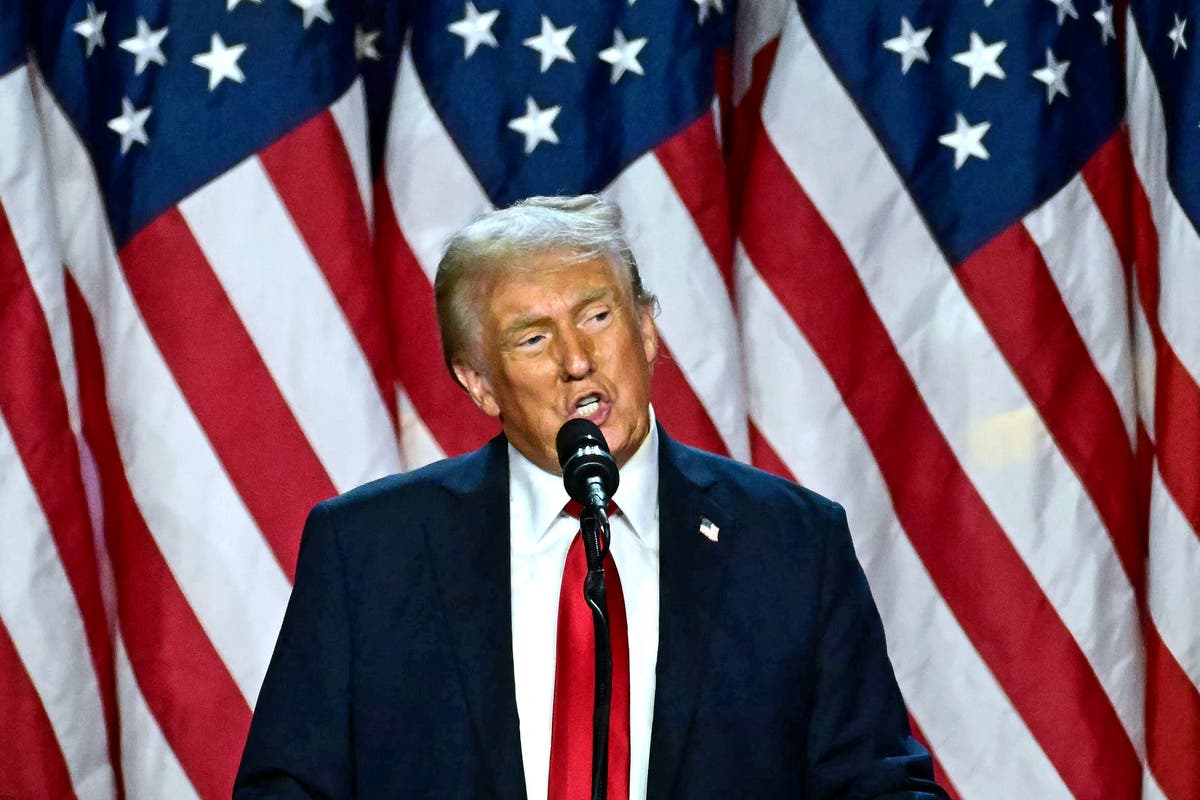Jobs
S&P 500 Is Set for Worst ‘Jobs Day’ in Two Years: Markets Wrap
(Bloomberg) — The selloff in stocks intensified and bond yields plunged after a weak jobs report fueled worries the Federal Reserve has been too slow to cut interest rates, risking a more pronounced economic slowdown.
Most Read from Bloomberg
Equities tumbled, with the S&P 500 poised for its worst day in reaction to jobs data in almost two years. A plunge in key technology companies sent the Nasdaq 100 down 10% from its peak, matching the definition of a “correction.” A rally in Treasuries extended into a seventh straight day. That drove futures traders to price in expectations that the US central bank will cut its benchmark rate by a full percentage point by the end of the year.
US hiring slowed markedly in July and the unemployment rate rose to the highest level in nearly three years, suggesting a faster deterioration in the labor market than previously thought. The figures may give Fed officials some reason to believe that their policies are cooling the labor market too much.
“Bad news is no longer good news for stocks,” said John Lynch at Comerica Wealth Management. “Of course, we’re in a period of seasonal weakness, but sentiment is fragile given economic, political, and geopolitical developments. Pressure will escalate on the Federal Reserve as market interest rates will continue the attempt to force their hand.”
The S&P 500 slid 2.4%. The Nasdaq 100 sank 3.2%. The Russell 2000 of smaller companies tumbled 4%. The yield on 10-year Treasuries declined 16 basis points to 3.81%. The dollar fell 0.7%. Intel Corp. plunged about 30% on a grim growth forecast.
Wall Street’s Reaction to Jobs:
Oh dear, has the Fed made a policy mistake? The labor market’s slowdown is now materializing with more clarity. A September rate cut is in the bag and the Fed will be hoping that they haven’t, once again, been too slow to act.
Panic Treasury buying continues as unemployment craters. The Fed has egg on their face. After raising our outlook to four cuts for the year, we are now raising that to five.
This is further proof that the economy is slowing, which has many worried the Fed is now firmly behind the eight ball. It is becoming clear that the Fed should be more worried about the economy than inflation, which is increasing the chances of a 50 basis point cut in September.
Washington drama, geopolitical worries, and now we can add a slowing economy to the picture. Bad news is back to being bad news, as investors are taking a sell first and ask questions later approach right now. The big question is are we sliding right into a recession? Or is the economy simply hitting a rough spot? We’d side with we will still avoid a recession, but the risks are rising.
Unemployment is up and that means the funds rate must come down.
After a surprisingly broad and weaker reading on manufacturing yesterday, the employment data adds to a short-term sense the Fed is now behind the curve on reducing rates. The outlook for rates has now moved to a better than average chance for a 50-basis point cut at the September meeting with a total of 3 cuts priced in between now and year-end.
Treasury yields dropped again indicating an impending economic growth scare while equities are becoming increasingly focused on the implications of a decidedly cooler backdrop.
Recession fears are dominating headlines as market participants wonder how the Fed will respond when Fedspeak is turned on full volume next week.
Needless to say, investors don’t want to hear that the deterioration in the labor market is “transitory.”
These numbers reflect a sharp deceleration in hiring, confirming the weakness we saw in yesterday’s claims data.
The same Fed that was behind the curve on inflation could now find itself behind the curve fighting a slowdown. September 18 can’t come soon enough.
Financial markets have turned attention from “when and how much will the Fed ease” to a “growth looks like it is plunging and the Fed is behind the curve” mentality. Bad econ news is no longer good. After the big equity run higher, investors are taking money off the table and booking profits since the October 2023 lows. Expect the near-term volatility to continue.
Rate cut likely to come in September. We have 2 cuts priced in this year and just 1 in 2025. The consensus and the Fed, in our view, are too optimistic on the magnitude of 2025 cuts.
We remain more cautious on both equity and fixed income exposure and are looking for better entry points in both asset classes. We believe there will be opportunities to buy equities at lower valuations and do not want to extend duration and buy long-term Treasuries at current yields.
The Sahm Rule Recession Indicator breached the 0.50 threshold that has historically signaled the US economy is in the early stages of a recession. We’re cognizant that there is plenty of data yet to come between now and the September 18th meeting — although if this trend in employment accelerates in August, the argument for a 50 bp cut becomes more compelling. That said, we are still in the 25 bp camp at the moment.
Friday’s weaker-than-expected jobs report reaffirms the Federal Reserve’s plans to cut interest rates in September, as it’s becoming clear that the labor market is cooling down. While the labor market has remained remarkably resilient over these past two years of elevated interest rates, it’s important for the Federal Reserve to stay ahead of any further labor market slowing by proceeding with its expected September rate cut.
The stock market is churning as investors try to figure out if current valuations are justified given the softening economic data seen in recent months. Stock market volatility is very normal, and we believe the economy is still on a sound footing.
As the market starts to recalibrate what could be the start of a longer-term rate cutting cycle, there may be additional stock market volatility along the way. Transitions in monetary policy regimes come with stock market volatility and some uncertainty.
From a Fed perspective, this does not translate into making hasty policy decisions, but it should help them remove the rose-tinted glasses when assessing policy decisions at the next meeting.
Ultimately, today’s employment data should embolden the committee to cut policy by more than 25 basis points at the next meeting.
Bad news is no longer good news for stocks. Of course, we’re in a period of seasonal weakness, but sentiment is fragile given economic, political, and geopolitical developments.
Pressure will escalate on the Federal Reserve as market interest rates will continue the attempt to force their hand. September is on the table, with December likely to follow.
Assuming a mid-90’s non-recessionary rate reduction, we suspect a few tweaks lower is appropriate.
The latest snapshot of the labor market is consistent with a slowdown, not necessarily a recession. However, early warning signs suggest further weakness. The number of those working part time for economic reasons rose the highest since June 2021. If the labor market weakens further, markets will likely price in three cuts this year.
That all important macro data we have been hammering for months is finally starting to turn in an ominous direction.
Once again prior prints were revised lower (I AM SHOCKED, SHOCKED I SAY!) and this week’s big miss all but cements a September rate cut and potentially more should this data continue to weaken on the heels of a very weak ISM number yesterday.
The second tech wreck of 2024 certainly has investors perhaps more jittery than before and yields are plunging on this news.
The inversion of the real yield curve last December was a warning.
The Fed has a lot of room to cut and rather than having to work with overleveraged businesses and households, there is a liquidity overhang the Fed can draw on.
The times, they are a-changin’! After two-plus years of better-than-expected job creation, the economy printed its first major downside surprise and unemployment rose more than anticipated. This marks an official “growth scare” and one that the Fed will have to pay close attention to.
To be true, the economy is still expanding and jobs are still being added, so calls that a recession is upon us are over-stated in our view. But the economic environment is changing quickly and the Fed should be attentive to downside risks.
For investors, being balanced to risk and remaining invested in high quality stocks and bonds are the best defense as risks rise and uncertainty is likely to persist.
This was a bad news is bad news report for the market and will continue the growth scare that has been roiling equities lately. The soft landing narrative is now shifting to worries about a hard landing, and the market is increasing the odds that the Fed will have to make a 50bps cut in September.
While worries of a policy mistake are rising, one negative miss shouldn’t lead to overreaction. GDP is still strong, average hourly earnings are rising, and inflation is coming down.
Equities selling off should be seen as a normal reaction, especially considering the high valuations in many pockets of the market. It’s a good reminder for investors to focus on the earnings of companies going forward.
Soft landing in doubt as labor market cracks.
In short, all this makes a September interest rate seem certain and raises the possibility of both a larger 50 bp cut or even an inter-meeting cut, although the latter would probably be dependent on another sharp rise in the unemployment rate in the August Employment Report, ahead of the Fed’s 17th/18 th September meeting.
Today’s figures may stir anxieties that central bankers haven’t moved fast enough to cut rates, nudging the jobs market into a downward spiral. The Fed’s lengthy hiking campaign is so close to achieving its objective for inflation – let’s hope that success on that front doesn’t cause the labor market to tumble.
A cooling jobs report is welcome news for Fed decision makers who have been waiting for an equilibrium to emerge before confirming the probability of near-term interest rate cuts. The Fed wants consistency: more month-over-month slowdowns in wage growth and two downward revisions build the case for interest rate cuts sooner rather than later.
Today’s softer-than-expected labor report is consistent with the messaging we heard from Wednesday during the Federal Reserve remarks.
Stocks are likely to fall when the Fed delivers its first interest-rate cut because the pivot will come as data signal a hard — rather than soft — landing for the US economy, according to Bank of America Corp.’s Michael Hartnett.
In the history of the start to Fed easing since 1970, cuts in response to a downturn have proved negative for stocks and positive for bonds, the BofA strategist wrote in a note, citing seven examples that demonstrated this pattern. “One very important difference in 2024 is extreme degree to which risk assets have front-run Fed cuts,” Hartnett said.
Some of the main moves in markets:
Stocks
-
The S&P 500 fell 2.4% as of 10:15 a.m. New York time
-
The Nasdaq 100 fell 3.2%
-
The Dow Jones Industrial Average fell 1.6%
-
The Stoxx Europe 600 fell 2.5%
-
The MSCI World Index fell 2.4%
-
The Russell 2000 Index fell 4%
Currencies
-
The Bloomberg Dollar Spot Index fell 0.7%
-
The euro rose 1.1% to $1.0911
-
The British pound rose 0.7% to $1.2830
-
The Japanese yen rose 1.7% to 146.83 per dollar
Cryptocurrencies
-
Bitcoin fell 0.1% to $64,598
-
Ether fell 1.1% to $3,133.83
Bonds
-
The yield on 10-year Treasuries declined 16 basis points to 3.81%
-
Germany’s 10-year yield declined nine basis points to 2.16%
-
Britain’s 10-year yield declined eight basis points to 3.80%
Commodities
-
West Texas Intermediate crude fell 3.3% to $73.77 a barrel
-
Spot gold rose 1.1% to $2,472.54 an ounce
This story was produced with the assistance of Bloomberg Automation.
–With assistance from Andre Janse van Vuuren, Lynn Thomasson and Lu Wang.
Most Read from Bloomberg Businessweek
©2024 Bloomberg L.P.










